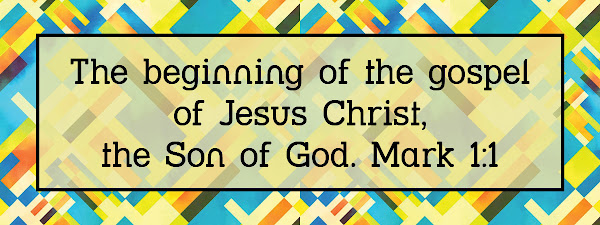Concept, Author, Date
• Revised Common Lectionary (RCL) Year B belongs to Mark's gospel. Along with Luke and Matthew, Mark is a synoptic gospel that views Jesus from a similar perspective, although each has a distinctive personality. As the shortest and most immediate of the four canonical gospels, Mark is the one for texting and tweeting (also known as posting on the app called X).
• Prior to Mark, good news or gospel was the returning Roman general's announcement of annihilating the enemy. Mark subverts that into the Good News of God's victory over sin and death, the triumph of the reign of life. All known manuscripts carry the heading The Gospel According to Mark, but this Mark probably is an unknown person or group and not Peter's ministry companion John Mark.
• Probably written to Greek speaking gentile Christians, possibly but not probably as early as 45 C.E., almost definitely no later than shortly after the destruction of the Jerusalem Temple in 70 C.E..
• Between them, Matthew and Luke include 631 of Mark's 661 verses. with about 90% in Matthew, 50% in Luke, making Mark's gospel an important resource for Luke and Matthew.
Sources
A variety of documents that circulated in the dynamic oral tradition before being written down. Scholars sometimes consider a possible source called Q for the first letter of the German Quelle; "Quelle" means source or river. Was there really a Q? That's still unknown. Was Mark Q? Almost definitely not.
Content
• Proclamation / announcement rather than history
• No birth narrative
• No resurrection account
• Mark doesn't mention Jesus' earthly father Joseph, yet because 6:2-3 asks, 2 "…What deeds of power are being done by his hands! 2 Is this not the carpenter, the son of Mary?…" we identify Jesus' as a tekton, something like a multiskilled handyman.
• Many miracles, healings, and exorcisms
• Mark famously features the Messianic secret: Jesus tells everyone don't tell anyone!
• Just as in Matthew and Luke, Mark's Jesus loves to refer to himself as "Son of Man" – the Human One.
After his baptism followed by 40 days in the wilderness that Matthew and Luke also report (but in greater detail), Jesus calls disciples Simon, Andrew, James, and John; then in his first act of public ministry, Jesus casts out a demon during a synagogue service.
Just as for Luke, in Mark's gospel the journey to Jerusalem and the cross is particularly intentional and incessant. For Mark, Jesus' passion and death provide the fullest understanding of Jesus' purpose and identity.
Worldview
Mark brings us God coming near to humanity and to all creation. God no longer is far away, behind the clouds. Think of how central the Jerusalem temple was to economic, political, and religious life! In Jesus of Nazareth, God no longer is contained and protected in the temple. Is there a new God in town? (But then again, all four gospel accounts are about God-with-us, God-among-us, God-for-us…)
Mark particularly asks, "Where do we look for God? Where do we find God?"
• Not hidden behind clouds or anywhere far from earth
• Not in the temple – but on the cross
• Not in established religious, economic, political institutions – but outside the city limits, in the wilderness. In the stranger and outcast.
During this year of Mark's gospel, let's consider: do we find God in the mainline church and in mainstream society?


No comments:
Post a Comment